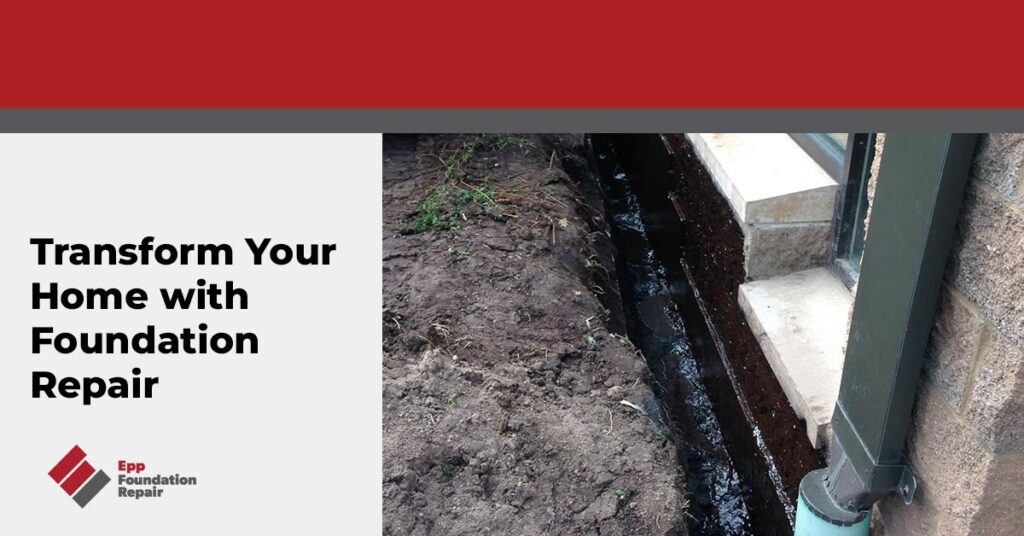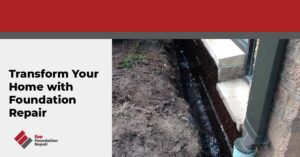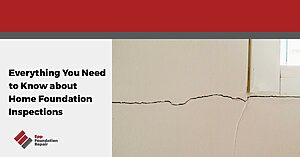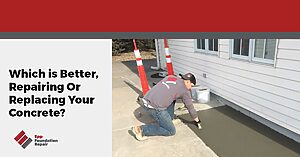Looking for information about foundation repair? If so, you’ve landed on the right page because that’s what we’re going to talk about in this article. We’ll review what foundation repair means, what happens before and after a foundation repair, the most common causes of foundation problems, and more.
What Is Foundation Repair?
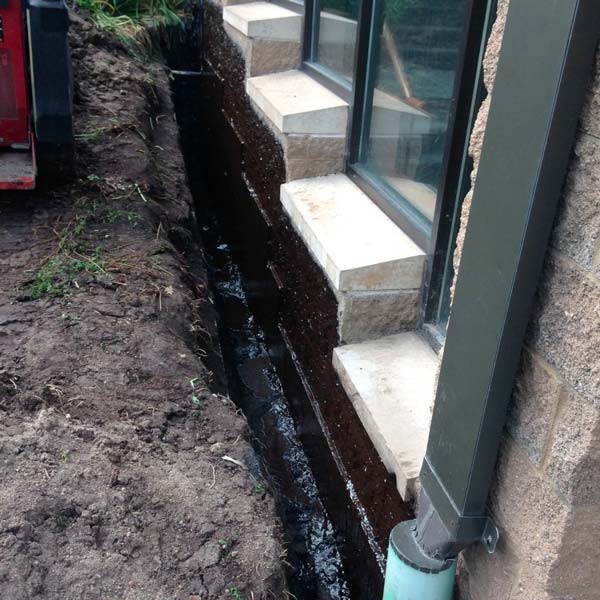
Foundation repair refers to the process of restoring the structural integrity of a building’s foundation. Foundation repair involves a detailed assessment of the extent of damage to the structure, followed by the implementation of appropriate repair methods, which will vary depending on the nature and severity of the damage. However, the goal is always to restore the foundation’s structural integrity. Timely foundation repair is crucial to prevent further damage to the structure and may help avoid costly and extensive repairs in the future.
Waterproofing is an equally critical component of foundation repair, particularly in areas with high rainfall or water tables. Waterproofing protects your foundation from water damage, which can compromise the structural integrity of your home and result in costly repairs. There are several techniques and materials used for waterproofing foundations, such as sealants, coatings, membranes, and drainage systems. Each waterproofing solution provides unique advantages and disadvantages, and a professional can recommend the best one based on your specific needs and budget.
What Happens Before A Foundation Repair?
Inspection and diagnosis
The first thing that happens before a foundation repair is an initial diagnosis of a foundation problem. This initial diagnosis will typically involve a thorough inspection of the foundation by a qualified professional, either a foundation repair contractor or a structural engineer. This inspection aims to identify the cause(s) of the foundation issue and determine the extent of the damage.
Site preparation
Once an accurate diagnosis has been made, the next step is site preparation. This may include removing any flowers or shrubs around the foundation and any other materials that might hinder the repair work. Depending on the specifics of the repair, other materials like drywall or flooring may need to be removed.
After A Foundation Repair
After a foundation repair, homeowners need to keep a few things in mind:
- Small cracks may appear. Even though the differential settlement was corrected via underpinning, small cracks may form here and there due to the lifting and leveling. These can be fixed with a bit of putty and paint.
- Mortar repair – If there were stair-step cracks in brick or masonry before the repair, you’ll need to replace the cracked mortar.
- Correct any drainage problems. If the cause of the problem was poor drainage around the foundation, this would need to be corrected to ensure the problem doesn’t reappear.
- Continue regular maintenance checks after foundation repairs to prevent any new issues from arising. Regularly inspecting the foundation and other parts of the house for signs of damage can help avoid costly repairs down the line. Here at Epp Foundation Repair, we offer a service plan that helps homeowners with regular maintenance so they can keep their home’s foundation healthy and strong.
What Causes Foundation Problems?
Various factors cause foundation problems, and understanding the root cause is the first step toward finding the right solution.
Differential settlement
The most common cause of foundation problems is differential settlement, or when a foundation settles unevenly into the ground. Differential settlement puts enormous stress on a foundation and can result in cracks in walls, floors, ceilings, and doors and windows that suddenly become difficult to open or close.
So, what causes differential settlement?
Differential settlement is caused by various things, including the following:
- Expansive soil – Expansive soil is one of the most common causes of differential settlement. This soil type has a high clay content that can absorb and retain water, causing it to expand. In dry weather, expansive soil will contract, creating movement in the ground under the foundation. Over time, this back and forth, swelling and shrinking, can cause differential settlement.
- Erosion-prone soil – Another factor that could contribute to differential settlement is erosion-prone soil. This soil type is loose and easily washed away, creating voids beneath the foundation. If the foundation settles into the voids, it will lead to differential settlement and structural problems.
- Seismic events – We probably don’t need to explain how earthquakes can cause differential settlement and structural damage. In regions prone to earthquakes, seismic retrofitting should be implemented to improve the home’s long-term stability.
- Excavation too close to the foundation – The soil underneath a foundation is carefully compacted and graded to distribute the structure’s weight evenly. If excavation is done too close to the foundation, this can disturb the soil under the foundation, leading to differential settlement.
- Tree roots – Large tree roots can also destabilize a foundation, leading to differential settlement and structural damage. Trees should be kept at least 15 feet away from the foundation.
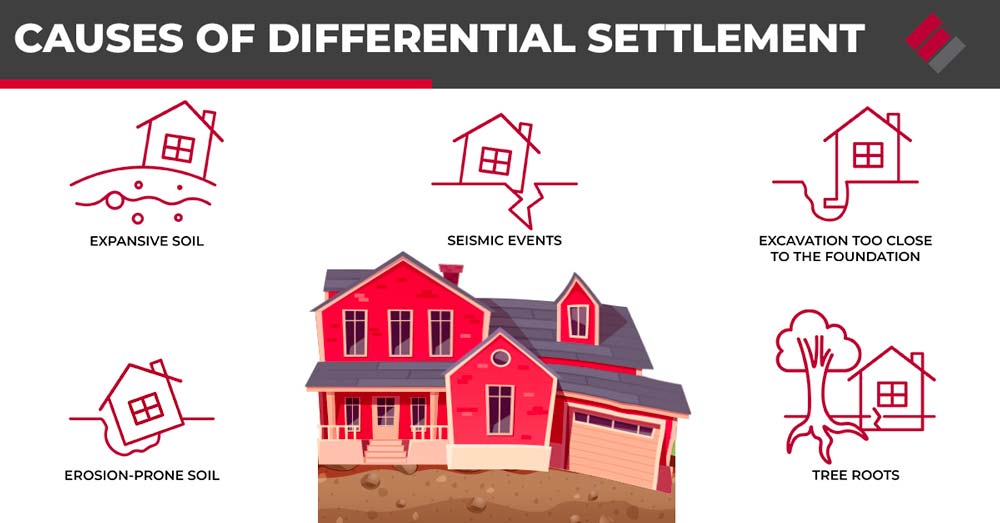
Hydrostatic pressure
Poor drainage around a foundation can cause hydrostatic pressure to build up and push against the foundation walls. If the pressure isn’t relieved, it can cause foundation walls to bow inward and even crack. Hydrostatic pressure is powerful enough to push water through invisible cracks in foundation walls and into the basement or crawl space. This will result in moisture problems inside the building.
The best way to make sure hydrostatic pressure can’t build up in the ground around the foundation is to install a drain tile system, either exterior or interior. There is no better foundation waterproofing solution available today. For more information about how a drain tile system works, see What Is Drain Tile?
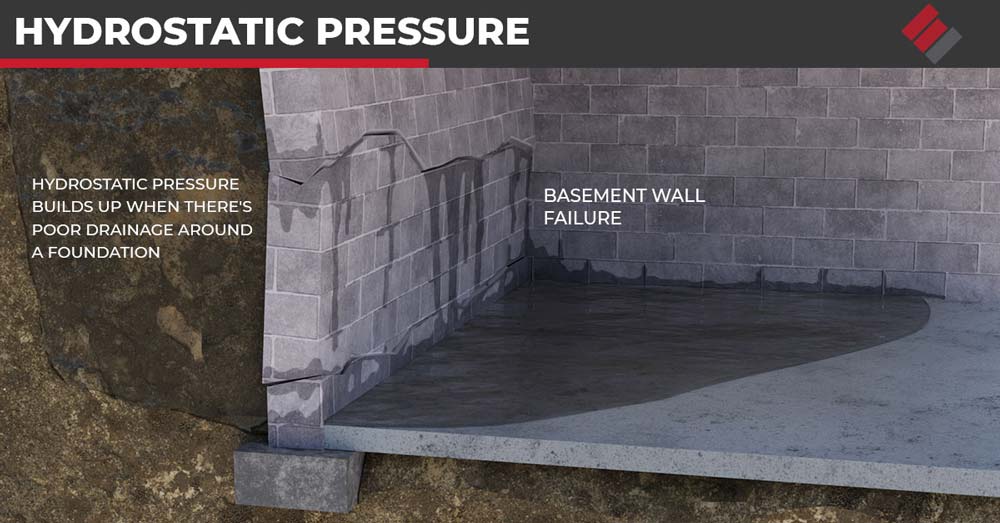
Poor construction practices
This might include inadequate soil preparation before construction. For example, the soil needs to be compacted before construction starts. If this isn’t done correctly, the structure will settle into the ground after it’s built, usually unevenly.
How Long Does It Take To Repair A Foundation?
The time it takes to repair a foundation depends on various factors, including the type and extent of the damage. The repair might take only a few days, or it could take up to a couple of weeks to complete.
For more information, see What Is House Underpinning?
How Long Does A Foundation Repair Last?
The answer to this question can depend on various factors, including the type of repair needed, the underlying cause of the foundation issue, and the quality of the repair work itself.
In general, foundation repairs can last anywhere from a few years to over a century, depending on the circumstances. For example, epoxy can quickly seal and reinforce a small crack. However, if the underlying cause of the crack isn’t addressed, the crack may reappear and require further repair.
On the other hand, if a more significant repair is made, such as installing piers to stabilize the foundation, the repair could last a century or more. However, it’s important to note that regular maintenance, good drainage, etc., is necessary to ensure the foundation remains stable over time.
Is It Worth It To Repair My Home’s Foundation?
Repairing a foundation can be a significant investment, with costs ranging from a few thousand dollars to upwards of tens of thousands of dollars, depending on the severity of the damage and the size of your home. However, foundation repairs are a worthwhile investment as they help prevent more serious structural damage from occurring in the future. An unrepaired foundation problem will worsen and cost more money to fix later.
Additionally, homebuyers are often hesitant to purchase a property with known foundation issues as these can be expensive and difficult to repair. By investing in foundation repairs now, you can increase your home’s resale value and make it a more attractive prospect to potential buyers.
For more information, see Common Signs Of A Sinking Foundation.
Can I Live In My House While The Foundation Is Being Repaired?
Yes, you’ll almost certainly be able to remain in your home while the foundation is being repaired. Rarely does the homeowner need to vacate the house while the repair is taking place, although some do by choice.
If you think your home might need foundation repair, contact us today to schedule a foundation evaluation. If we find a problem, we’ll give you a repair estimate. Since 1994, we’ve helped clients in Lincoln, Omaha, Southeastern Nebraska, Northwestern Missouri, and parts of Northeastern Kansas with foundation repair, basement waterproofing, crawl space encapsulation and concrete leveling for their homes.

